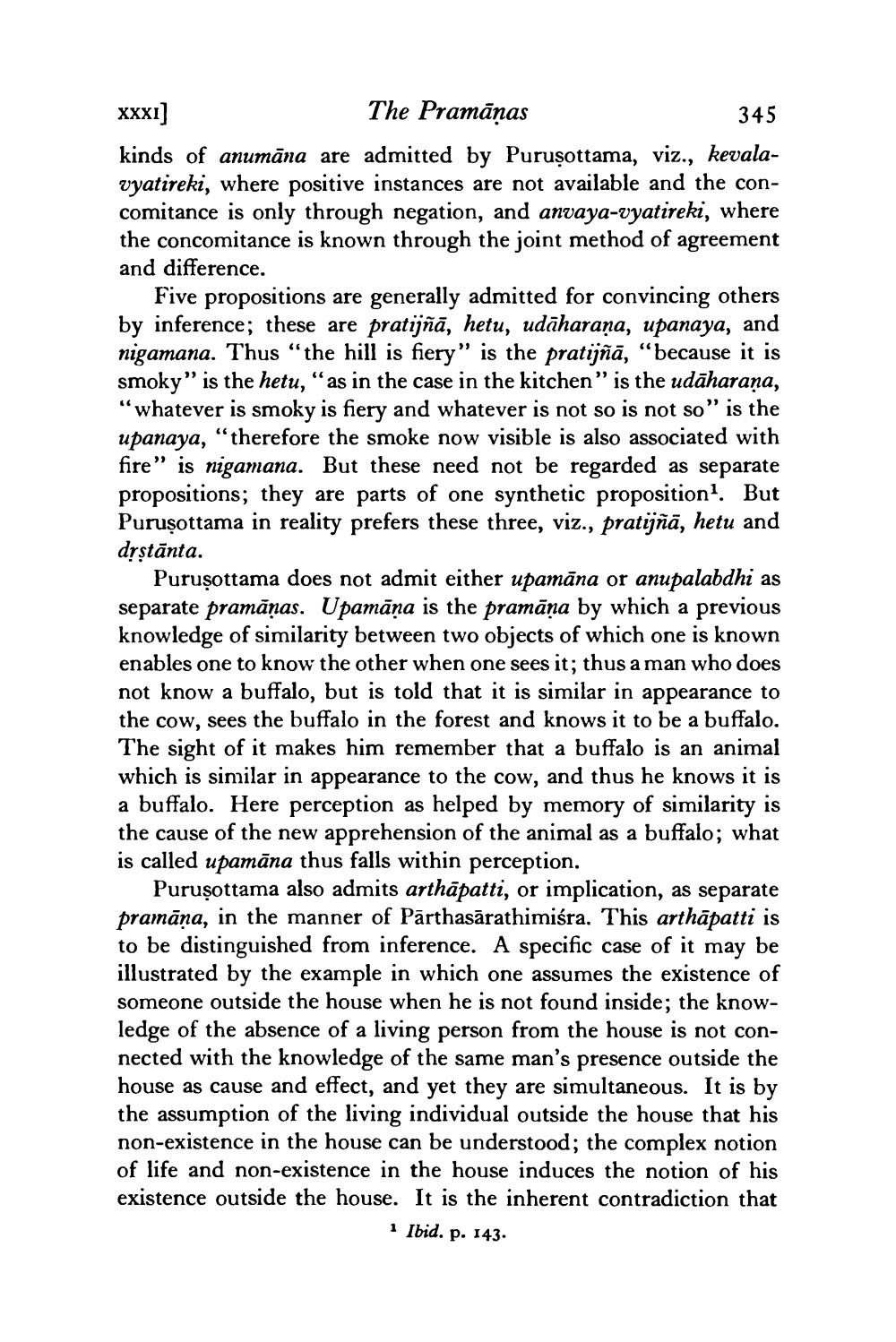________________
XXXI]
The Pramānas
345 kinds of anumāna are admitted by Purușottama, viz., kevalavyatireki, where positive instances are not available and the concomitance is only through negation, and anvaya-vyatireki, where the concomitance is known through the joint method of agreement and difference.
Five propositions are generally admitted for convincing others by inference; these are pratijñā, hetu, udāharana, upanaya, and nigamana. Thus "the hill is fiery” is the pratijñā, “because it is smoky” is the hetu, "as in the case in the kitchen" is the udāharana, “whatever is smoky is fiery and whatever is not so is not so " is the upanaya, “therefore the smoke now visible is also associated with fire" is nigamana. But these need not be regarded as separate propositions; they are parts of one synthetic proposition'. But Purusottama in reality prefers these three, viz., pratijñā, hetu and drstānta.
Purusottama does not admit either upamāna or anupalabdhi as separate pramānas. Upamāna is the pramāna by which a previous knowledge of similarity between two objects of which one is known enables one to know the other when one sees it; thus a man who does not know a buffalo, but is told that it is similar in appearance to the cow, sees the buffalo in the forest and knows it to be a buffalo. The sight of it makes him remember that a buffalo is an animal which is similar in appearance to the cow, and thus he knows it is a buffalo. Here perception as helped by memory of similarity is the cause of the new apprehension of the animal as a buffalo; what is called upamāna thus falls within perception.
Purusottama also admits arthāpatti, or implication, as separate pramāna, in the manner of Pārthasārathimiśra. This arthāpatti is to be distinguished from inference. A specific case of it may be illustrated by the example in which one assumes the existence of someone outside the house when he is not found inside; the knowledge of the absence of a living person from the house is not connected with the knowledge of the same man's presence outside the house as cause and effect, and yet they are simultaneous. It is by the assumption of the living individual outside the house that his non-existence in the house can be understood; the complex notion of life and non-existence in the house induces the notion of his existence outside the house. It is the inherent contradiction that
1 Ibid. p. 143.




